_Location: Jinhua City, Zhejiang Province, China
_Company: Turenscape | www.turenscape.com
Peking University College of Architecture and Landscape
_Collaborators:
Bridge Structural Consultant | Shenzhen Xilun Civil Engineering Reconnaissance & Design Co.,Ltd
_Clients: Jinhua Municipal Government
_Contractors: Jinghua Landscape Planning & Construction Company Limited
_Size: 26 Hectares
_Year completed: 2014
_Text credits: Turenscape
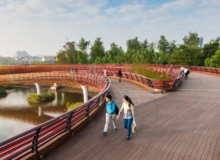
Jinhua, Zhejiang Province, China
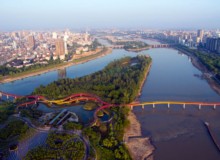
Jinhua, Zhejiang Province, China
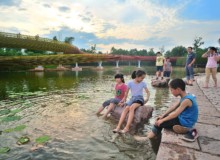
Jinhua, Zhejiang Province, China
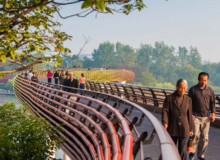
Jinhua, Zhejiang Province, China
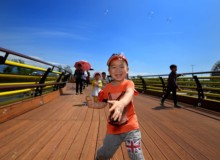
Jinhua, Zhejiang Province, China

Jinhua, Zhejiang Province, China
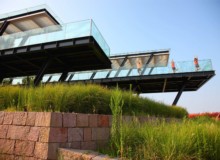
Jinhua, Zhejiang Province, China
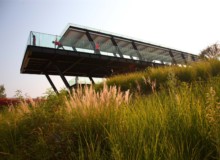
Jinhua, Zhejiang Province, China
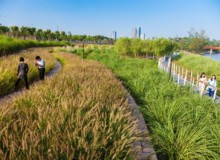
Jinhua, Zhejiang Province, China
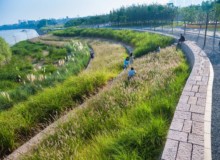
Jinhua, Zhejiang Province, China

Jinhua, Zhejiang Province, China
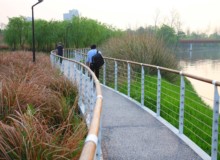
Jinhua, Zhejiang Province, China
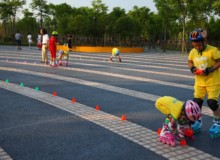
Jinhua, Zhejiang Province, China
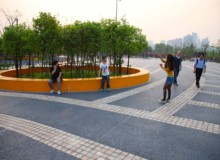
Jinhua, Zhejiang Province, China
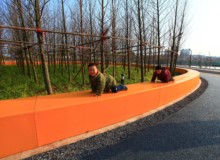
Jinhua, Zhejiang Province, China
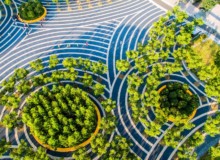
Jinhua, Zhejiang Province, China

Jinhua, Zhejiang Province, China
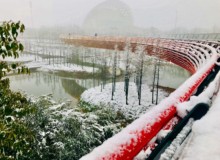
Jinhua, Zhejiang Province, China
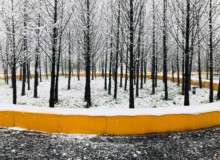
Jinhua, Zhejiang Province, China
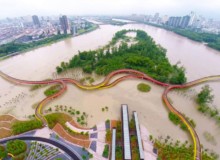
Jinhua, Zhejiang Province, China
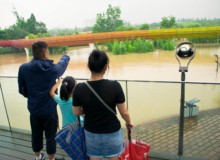
Jinhua, Zhejiang Province, China
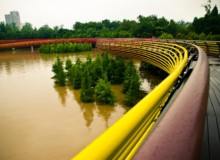
Jinhua, Zhejiang Province, China
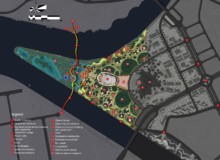
Jinhua, Zhejiang Province, China
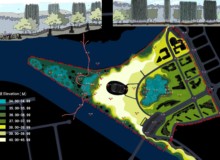
Jinhua, Zhejiang Province, China
Project Description
Site and Challenges
In the urban heart of Jinhua, a city with a population of over one million, one last piece of natural riparian wetland of more than 64 acres remains undeveloped. Located where the Wuyi River and Yiwu River converge to form Jinhua River, this wetland is called Yanweizhou, meaning “the sparrow tail”. The three rivers divided the densely populated communities in the region. As a result of this inaccessibility, the cultural facilities, including the opera house and the green spaces adjacent to the Yanweizhou were underutilized. The remaining riparian wetland was fragmented or destroyed by sand quarries and is covered with secondary growth.
The site conditions posed four major challenges: 1) How can the remaining patch of riparian habitat be preserved while providing amenities to the residents of the dense urban center? 2) What approach to flood control should be used (prevention with a concrete retaining wall or cooperation by allowing the park to be flooded)? 3) How can the existing organically shaped opera house building be integrated into the surrounding environment? 4) Finally, how can the separated city districts be connected to the natural landscape to strengthen the community and cultural identity?
Design Strategies
Adaptive Tactics to Preserve and Enhance the Remnant Habitats
The first adaptive strategy was to make full use of the existing riparian sand quarries with minimum intervention. In this way, the existing micro-terrain and natural vegetation are preserved, allowing diverse habitats to evolve through time. The biodiversity of the area was adapted and enhanced through the addition of native wetland species.
Flood Adaptive Terrain and Planting Design
Due to its monsoon climate, Jinhua suffers from annual flooding. Hard high walls have been built, or were planned to be built, to protect the last patch of riparian wetland (Yanweizhou) from the 20-year and 200-year floods. These floodwalls would create dry parkland above the water but destroy the lush and dynamic wetland ecosystem. Therefore, the landscape architect devised a contrasting solution, and convinced the city authority to stop the construction of the concrete floodwall and to demolish others. Instead, the Yanweizhou project “makes friends” with flooding by using a cut-and-fill strategy to balance earthwork and by creating a water-resilient terraced river embankment that is covered with flood adapted native vegetation. Floodable pedestrian paths and pavilions are integrated with the planting terraces, which will be closed to the public during the short period of flooding. The floods bring fertile silt that is deposited over the terraces and enrich the growing condition for the tall grasses that are native to the riparian habitat. The terraced embankment will also remediate and filtrate the storm water from the pavement above. The Yanweizhou Park project showcases a replicable and resilient ecological solution to large-scale flood management.
In addition to the terraced river embankment, the inland area is entirely permeable in order to create a water resilient landscape through the extensive use of gravel that is re-used material from the site. The gravel is used for the pedestrian areas, the circular bio-swales are integrated with tree planters, and permeable concrete pavement is used for vehicular access routes and parking lots. The inner pond on the inland is designed to encourage river water to infiltrate through gravel layers. This mechanically and biologically improves the water quality to make the water swimmable.
An Adaptive Pedestrian Bridge Connects City and Nature, Future and Past
A pedestrian bridge snakes across the rivers, linking the parks along the riverbanks in both the southern and northern city districts, and connecting the city with the Yanweizhou Park within the river. The bridge design was inspired by the local tradition of dragon dancing during the Spring Festival. For this celebration many families bind their wooden benches together to create a long and colorful dragon that winds through the fields and along narrow dirt paths. The Bench Dragon is flexible in length and form as people join or leave the celebration. Like the bench dragon in the annual celebration the “Bench Dragon Bridge” symbolizes not only a form of celebration practiced in Jinhua area, but is a bond that strengthens a cultural and social identity unique to this area. As water-resilient infrastructure, the new bridge is elevated above the 200-year flood level, while the ramps connecting the riparian wetland park can be submerged during the 20-year and larger floods. The bridge also hovers above the preserved patch of riparian wetland and allows visitors an intimate connection to nature. The many ramps to the bridge create flexible and easy access for residents from various locations of the city in adaptation to the flow of people. All together 2,300’ long, the bridge is composed of a steel structure with fiberglass handrails and bamboo paving. It is truly a resilient bridge that is adaptive to river currents and the flows of people while binding city and nature, future and past.
Resilient Space for a Dynamic Experience
The large oval opera house (designed by others) posed significant challenges for the landscape architect. First the building shape tends to repel rather than embrace users and landscape. Therefore, the first challenge was devising innovative forms that would welcome and embrace visitors. Secondly, the area near the building needed to accommodate the large opera audience as well as the need for intimate spaces and ample shade. Finally, the designers were challenged with the problem of how to integrate the singular flood-proof big object into the floodable, riparian waterfront. The design uses curve as the basic unifying pattern language to integrate the building and the environment into a harmonious whole, including the curvilinear bridge, terraces and planting beds, concentric paving bands of black and white, and meandering paths that define circular and oval planting areas and activity spaces. The spatial organization and design forms establish an extensive paved area for a large audience during the events at the opera house. However, the forms and the inclusion of alcoves create places for the individual, couples and small groups. The dynamic ground of the pavement and planting patterns define circular bio-swales and planting beds, densely planted with native trees and bamboo, bound by long benches made of fiberglass. The circular bio-swales and planting patches resemble raindrop ripples on the river. The reverse curves simultaneously refer to the shape and scale of the building while forming a contrasting shape that is human in scale and enclosed for more intimate gatherings. They also reflect the weaving of the dynamic fluxes of currents, people and material objects that together create a lively pleasant and functional space.
Conclusion
The project is a proven success. After the park opened in May 2014, an average of 40,000 visitors used the park and the bridge each day for the first month and thousands of daily users afterwards. The local media exclaimed: “the whole city is crazy about one single bridge!” And now, the Yanweizhou Park has created a new identity for the city of Jinhua. The water adaptive solution demonstrated in this project has now been replicated in the ecological restoration projects of other rivers in Jinhua that the landscape architect is now doing. It is widely celebrated as a model Sponge City project in Chinese media and beyond and was named as The Landscape of the Year 2015 at The World Architecture Festival.






